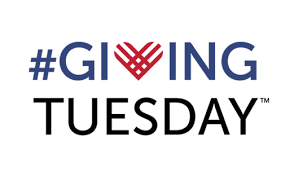
The COVID-19 pandemic affects everyone, but it does not affect us equally. Women across the United States bear disproportionate burdens as primary caretakers of children and elderly. Working women are most affected as they attempt to juggle their jobs and complicated home lives. As of September 2020, at least 876,000 women have dropped out of the U.S. workforce because of the pandemic. On Friday, November 13, Women’s Impact Fund hosted a discussion about the impacts of COVID-19 on working women.
Dr. Michelle Meggs, Executive Director of UNC Charlotte Women + Girls Research Alliance, and Jill Flynn, Managing Partner at Flynn, Heath Holt Leadership, and a founding member of WIF, shared their expertise on current issues facing working women. The panel was moderated by Amanda Glowacki, business owner, working mother and WIF Lunch & Learn Committee member. The Lunch & Learn was divided into three segments: (1) background information provided by our panelists; (2) survey of WIF
participants followed by break-out discussions; (3) Q&A with panelists.
Dr. Meggs kicked off the discussion by providing a foundation for understanding the effects of the pandemic on working women. This pandemic highlights the “third shift.” In addition to working, women care for kids and homeschool, care for elderly, and bear the brunt of household chores. This pandemic underscores the excessive burdens placed on women who continue to be primary household managers. The pandemic also highlights that women, the backbone of the service industry in the U.S., are also the most vulnerable. Because women are disproportionately employed in jobs in service industries, hospitality and government, they have experienced the most job losses. Their exposure to COVID-19 in these jobs puts them and their families especially at risk. Women leave these jobs because they are not safe. For example, Black women represent 6% of the U.S. workforce, but they hold 11% of jobs held by “essential workers.” The downward economic spiral is real and not shared equally across society. According to the Institute for Women’s Policy Research, since March 13, 2020, household income has decreased: 44% for White women; 54.5% for Black women; 58% for Hispanic women; 44.7% for Asian women; 50.7% for Other/multiracial women. Dr. Meggs emphasized that the pandemic is cutting across all education levels, race and class. According to Dr. Meggs, “The pandemic is focusing a gender intersectional lens on how systems impact women’s lives and the ways women care for themselves, their families and their communities.” It is exposing how the systems in the U.S., which lag those in other developed countries, are more committed to the structure of patriarchy than to supporting women.
How does the pandemic impact all the work that has been done by women before us? According to Jill Flynn, the pandemic undermines gains made by women in the workplace and it exacerbates existing disparities. All women, and especially Black and Brown women, suffer from lack of sponsorship, lack of role models, and delayed promotions in the workplace. Working mothers fear judgement because of the juggling they do to balance their families and their careers. Because many women work remotely during COVID-19, they interface less and receive less visibility. These variables undermine gains made by women. What should managers do? Jill recommends “…making conscious what is usually unconscious.” She suggests that effective managers lead from vulnerability – “connect and listen.” She asserts that good intentions aren’t enough. Reach out to women of color. Stand with our sisters, get to know one another, and build trust.
L&L participants were asked how they feel about working during COVID-19:
- Have you made a decision to exit the workforce because of COVID-19? 7% – Yes, 93% – No
- Have you thought about leaving the workforce because of COVID-19? 50% – Yes, 50% – No
- Is this a topic that you have noticed in conversations with other working women? 89% – Yes, 11% – No
The results indicate participants are not actively leaving the workplace, but it is on their minds. As one participant observed, “We are all experiencing a more pronounced gender division of labor. The longer schools go without full attendance, the more women will pull out of the workforce.”
The Q&A segment focused on ways women can help themselves and others. When asked how we leverage sponsor relationships in the workforce, Jill suggested pairing high level influential leaders with women. She cautioned that mentoring doesn’t come naturally. Men, in particular, may need guidance on how to be effectively sponsors of women. Dr. Meggs spoke passionately about how we can build trust with one another by “doing” rather than talking. She urged us to take a hard look at our own biases and examine how they prevent us from helping others. Amanda closed the session by reassuring us that “We’ve got your back. Reach out if you are having a moment.”






Leave a Reply